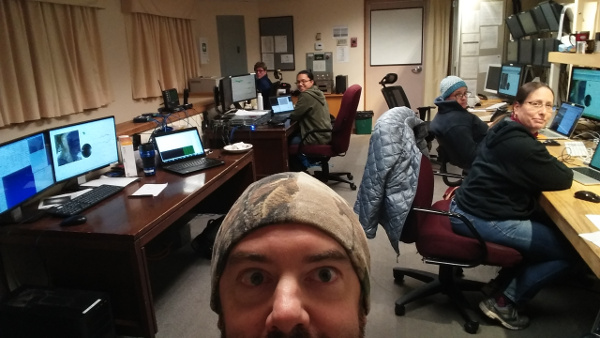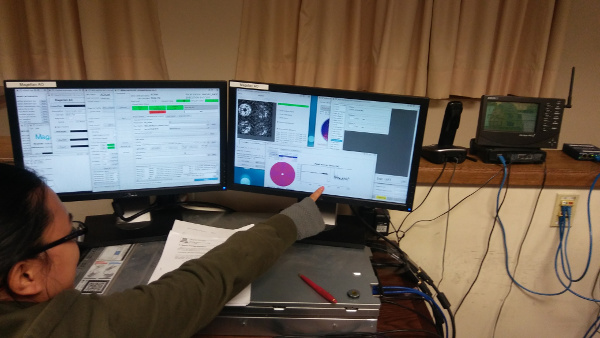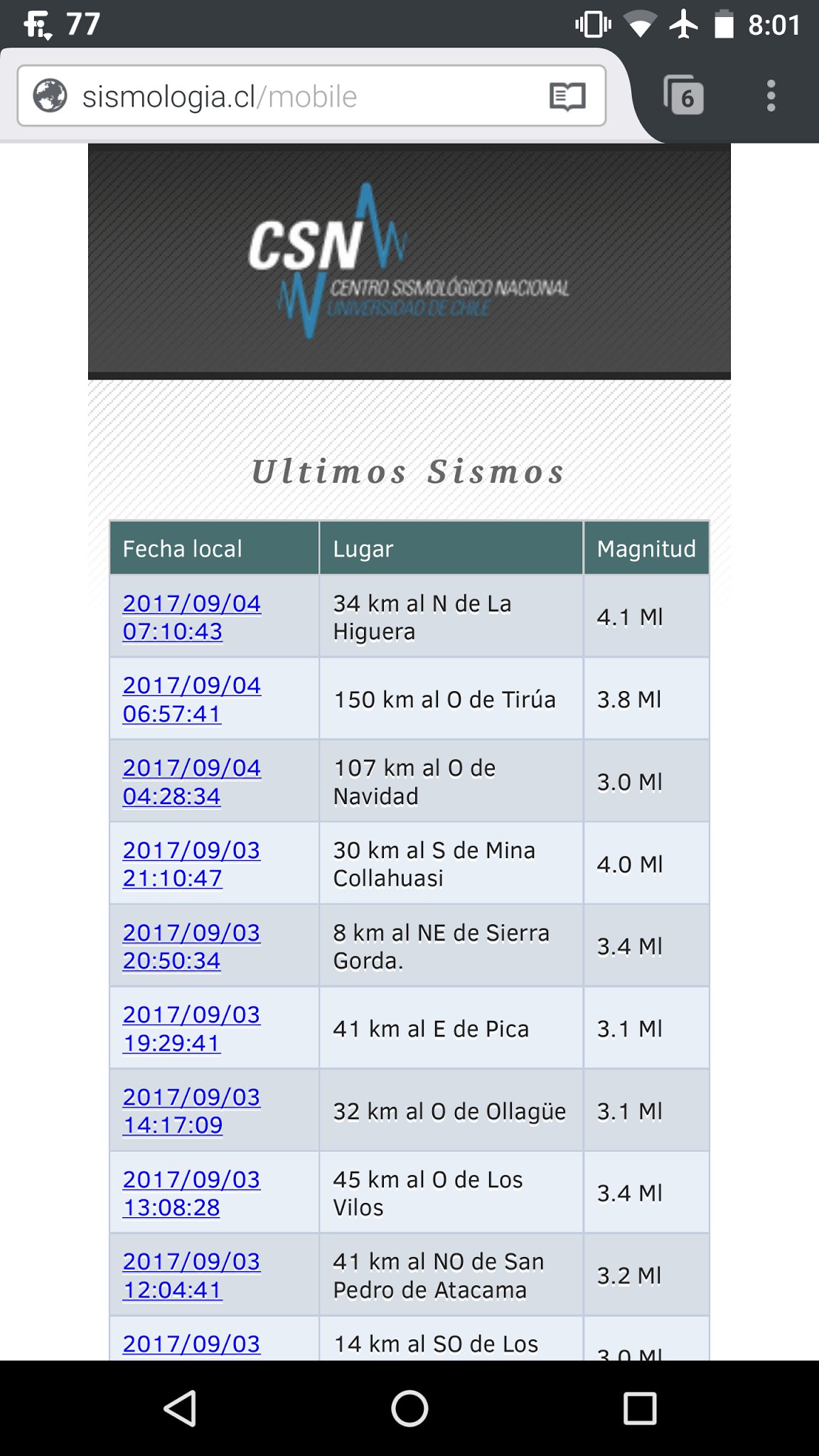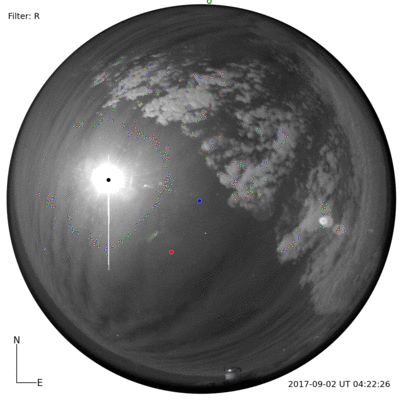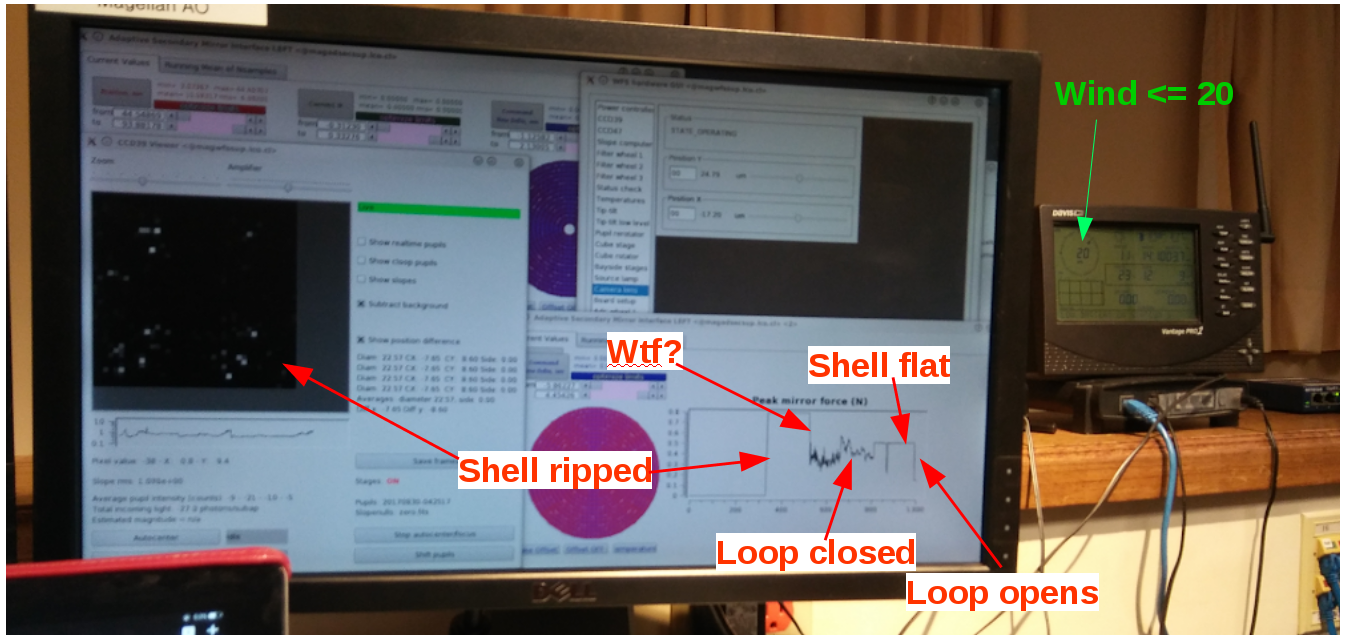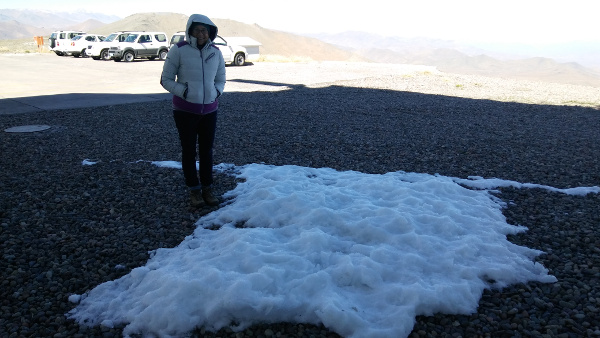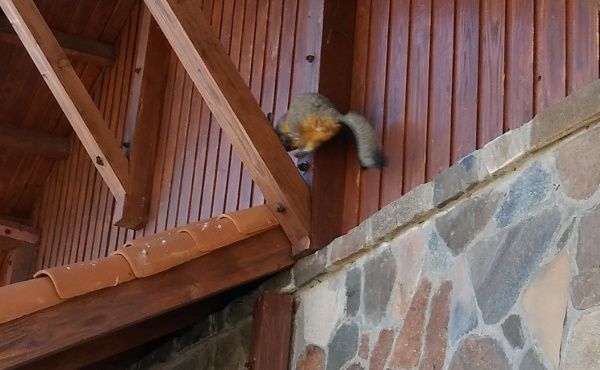Well that’s it. The system is completely off the telescope. The NAS with the WFS and VisAO is safely packed away in the Aux, as is our intrepid Clio. The ASM is all wrapped up on the floor of the Clay dome, ready to be trucked down the the cleanroom tomorrow.
If you’ve seen the last several night’s posts, you’ll be up to speed on the comings and goings of our new friend Hedwig, a Magellanic Horned Owl that has been using the all-sky camera as a night time perch. To try to make sense of the somewhat distorted perspective the all-sky gives us of our friend, Katie and I headed down to the area near the Swope telescope where the camera lives to check it out.
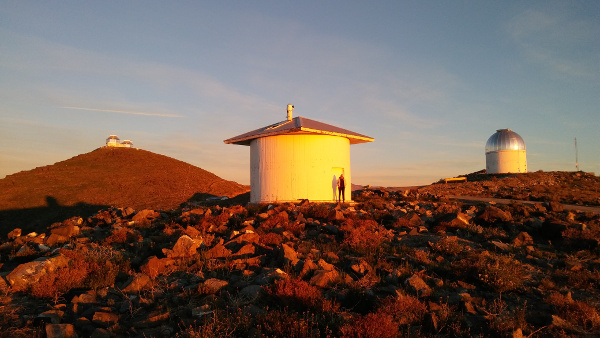
The all-sky camera sits on top of the pole you see above the building.
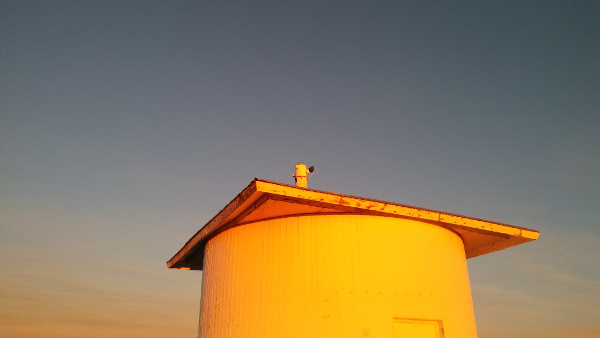
Hedwig has a nice view of the Magellan telescopes from that perch.
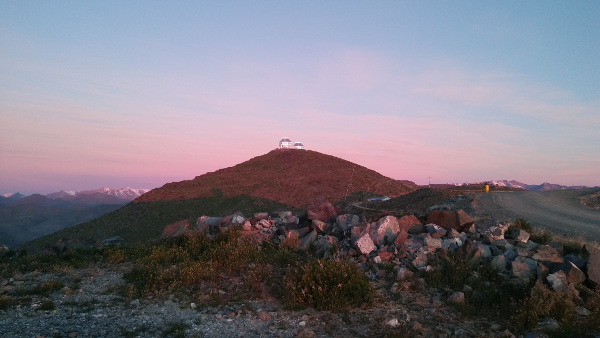
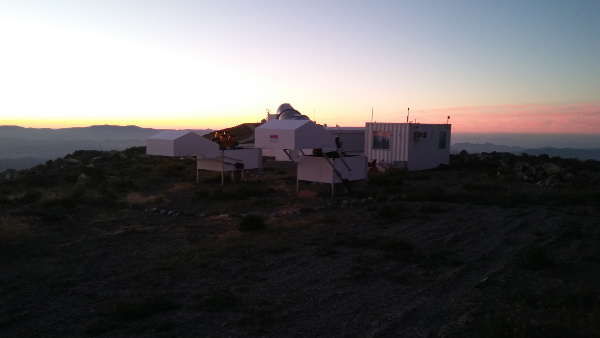
Jhen posted some pics from our GMT tour. Here’s another one, which captures the almost lush look of the place after this winter’s precipitation. Povilas is insisting that it’s just like Ireland.
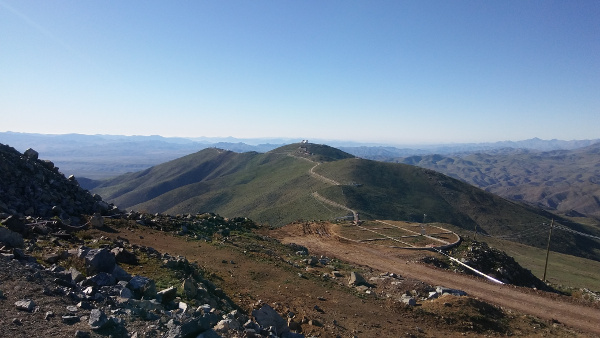

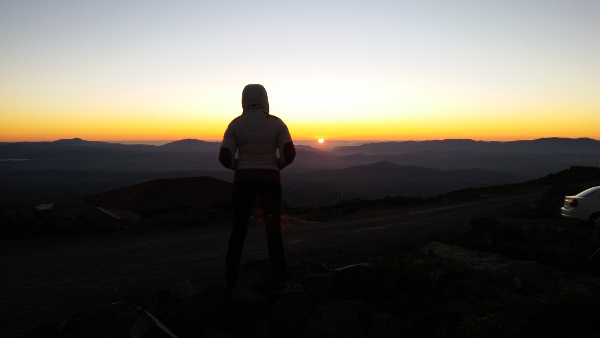
Over the latitude > 0 summer, I’ve been listening to a band called “The Dead South” quite a bit. With a little editorial license, I think their eponymous song is a perfect summary of the run:
Oh pass the rum [ed: Pisco please] on down the line it’s getting pretty cold
It’s been nine [ed: 13] straight days of hell and burning fires in the snow
And I haven’t seen my baby since that old black ship [ed: the NAS]set sail
Still we’re holding out ’till winter dies and hoping our strength prevails
The full moon peaks around the clouds [ed: every night] as the grey wolves [ed: owls] cry
The hour’s getting late and we’ve drunk every bottle dry [ed: ummm….]
Just one more march [ed: flight] from dusk ’till dawn ’till we finally arrive
At the gates of those who long ago burned our houses and took our lives
And we’ll sing
“We are the Dead South who came across the sea
To take back our lives and leave this land of misery
Our will is our weapon our hearts forever bound
Come on now tilt your bottle back and let’s go grab another round”
The wind is at our back [ed: literally] the ground is shaking at our feet [ed: literally]
Marching for the gates we pray our lord my soul to keep
For if we ever get ourselves out from this mess alive
I’ll be singing this song for years to say I’m happy we survived
We’re now starting the long slog back to a day schedule. So here’s an encore from them, called “Delirium”:
